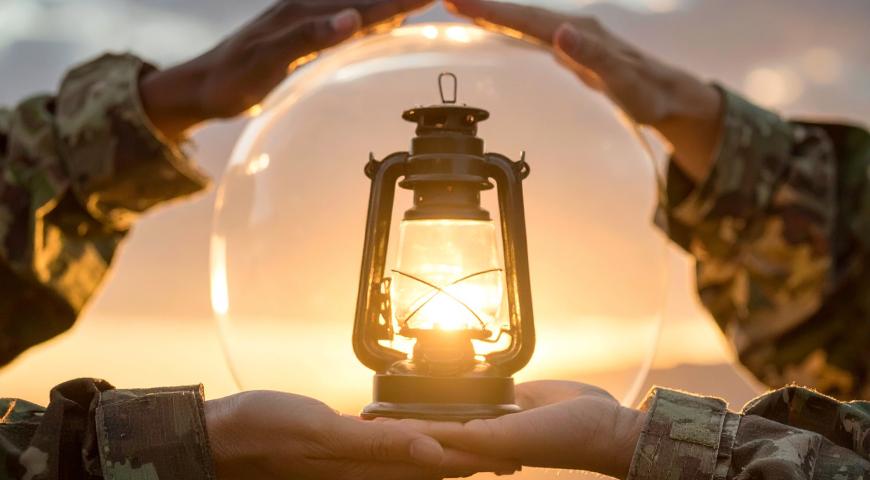On 17 April 2020 the Chief of the Defence Force (CDF) released CDF Directive 05/2020 Australian Defence Force Mission Set[1]. The mission set defines the Defence mission, the Australian Defence Force mission and the missions for the Navy, Army, Air Force, Joint Capabilities Group, Joint Operations Command and the VCDF Executive.
The Defence Mission ‘To defend Australia and its national interests in order to advance Australia’s security and prosperity’ is the overarching mission that sits above the ADF Mission: ‘To apply military power in order to defend Australia and its national interest’. These missions, and the subordinate missions for the services, are nested and synchronised. The Secretary and CDF, with the Minister for Defence’s endorsement, sought to ‘tighten and strengthen ADF organisational alignment, and integration within the broader One Defence enterprise.’[2]
The CDF’s intent to establish one set of Defence values is another mechanism to further align Defence, and reduce organisational stovepipes and cultural barriers. This paper argues that one set of values, underpinning the One Defence mission, should be supported by a single Performance Appraisal Report (PAR) for all ADF personnel below the rank of O6.[3]
Currently, each of the services utilise similar but different Personal Appraisal Reports, or Personnel Performance Reports. These reports all have similar purposes and uses and when analysed in detail, utilise the majority of the same assessment criteria. To align with the release of the Defence mission sets, and the imminent release of one set of Defence values, these forms should be consolidated into one, achieving an alignment of purpose, structure and reporting from the Defence enterprise level, through the service and groups, to the individual.
The process of consolidating the report for the three services should be straightforward. Each of the services utilise parts of the form for administrative management such as the recording of the individual’s personal details, individual readiness, and reporting period. All of the reports define the job requirement and assessing officer’s expectations. Each assessment has an area for input for the senior assessor, and boxes to describe promotion prospects and broad potential.
The Royal Australian Navy’s officer PAR uses 15 boxes to assess and report on performance, whilst the Australian Army and Royal Australian Air Force officer PARs use 12 boxes to do the same. In total, there are 19 assessment area across the three service officer PARs.
Each of the three services have the same or similar assessments of seven key officer PAR criteria:
- Job competence
- Values/defence ethos
- Interpersonal relations
- Judgement and common sense
- Communication skills; and
- Adaptability
An additional six criteria are shared by two of the three services. These include:
- Strategic perspective/Organisational understanding (Army and Air Force)
- Professional development (Navy and Air Force)
- Productivity/Resource management (Navy and Army)
- Work ethic (Army and Air Force)
- Foresight and implementation of contingencies/intellect (Navy and Army); and
- Responsibility (Navy and Air Force)
Only five additional criteria are single service-specific. These include:
- Promote the wellbeing and development of subordinates (Navy)
- Teamwork (Army)
- Analysis (Navy)
- Decisiveness (Navy)
- Resilience (Air Force)
One ADF Officer PAR should have no more than the 15 criteria utilised by Navy. The first seven of these criteria are already consistent across the three services, and the addition of no more than eight boxes should be negotiated by the three service personnel organisations. The list below provides a recommended 13 criteria structure as the basis of one ADF Officer PAR:
- Defence values
- Job competence
- Interpersonal relations
- Judgement and common sense
- Leadership and the development of subordinates
- Communication skills
- Adaptability
- Strategic Perspective
- Professional Development
- Productivity
- Work Ethic
- Intellect, Analysis and Foresight
- Responsibility.
The PAR for enlisted personnel across the three services also share many similarities, but a broader number of criteria. The three service enlisted personnel PARs share the same number of assessment boxes as their respective Officer reports - Navy use 15 criteria, whilst the Army and Air Force forms use 12 criteria. Notably, the assessment criteria for Navy officers and enlisted share seven out of the 15 boxes, Army shares 10 out of 12 criteria, and the Air Force utilises exactly the same form and the same 12 assessment criteria for enlisted and officers up to the rank of Group Captain.
For the three service enlisted PARs the spread of assessment criteria are broader than the officer PARs, with the three service enlisted PARs using a total of 25 criteria. This potentially makes consolidation more complex, but not unachievable.
Each of the three services have the same or similar assessments of six Enlisted PAR criteria:
- Navy values, culture and behaviour / Army ethos / Military ethos (Air Force)
- Oral communication (Navy) / Oral and written communications (Army) / Communications skills (Air Force)
- Basic service skills; Application of job knowledge and skills (Navy) / Job competence (Army/ Air Force) / Technical/trade skills (Army)
- Interpersonal relations (Navy and Army) / Interpersonal styles (Air Force)
- Leadership (Navy and Army) / Leadership, followership (Air Force)
- Capacity for work (Navy), Work ethic (Army/ Air Force)
An additional four criteria are shared by two of the three services. These include:
- Teamwork (Navy and Army)
- Judgement (Army/ Air Force)
- Written communications (Navy) / Oral and written communications (Army)
- Adaptability (Army/ Air Force
An additional 15 criteria are listed by one Service only:
- Assessment for members with subordinates – training and development of others (Navy)
- Promote the wellbeing and development of subordinates (PO and above Navy)
- Productivity (Navy)
- Organisation of work (Navy)
- Problem-solving (Navy)
- Resourcefulness (Navy)
- Initiative (Army)
- Adaptability (Army/ Air Force)
- Accountability (Army)
- Strategic perspective WO2 and WO1 only (Army)
- Commitment to professional development (Air Force)
- Resilience (Air Force)
- Responsibility (Air Force)
- Organisational understanding (Air Force)
One ADF enlisted PAR should have no more than the 15 criteria utilised by Navy. The first five of these criteria are already consistent across the three services, and the addition of no more than ten criteria should be negotiated by the three service personnel organisations. The list below provides a recommended 13 criteria structure as the basis of one ADF enlisted PAR.
- Defence values
- Communication skills
- Basic service skills / Job competence
- Interpersonal relations
- Leadership, followership
- Teamwork
- Work ethic
- Judgement and common sense
- Problem-solving
- Initiative
- Responsibility
- Resilience
- Assessment for members with subordinates - training, wellbeing and development of subordinates
The recommended assessment criteria for enlisted personnel shares many of the same categories as the recommended list for Officers. As already discussed, the Air Force has utilised the same form for all ranks up to Group Captain. In order to smooth the transition to a new process, it is recommended that a single ADF officer PAR and a single enlisted PAR is developed, with a potential subsequent step to consolidate the PAR for all ranks into one form.
The development of single ADF Officer and Enlisted PARs would be conceptually simple, requiring a straightforward discussion between the three services, and the amendment of the electronic web form. If there was disagreement over one or more of the criteria that could not be resolved, a smart web form could create bespoke assessment boxes once the member specifies their service. As the changes to the assessment criteria would be limited, training in the updated process would be relatively simple, and could be done with an accompanying user manual, video message or online learning package.
One of the potential obstacles to the introduction to ADF wide forms could be a perception that a single form is not suitable for the diversity of roles within the ADF and across the services. This concept could be addressed by highlighting the diversity within services – for example that a Navy clearance diver utilises the same PAR as a ships writer, an Army tank crew commander and dental technician are assessed against the same criteria, and a Squadron Leader JSF pilot and Aircraftsman/Woman air defence guard use the same form.
The introduction of a common, tri-service approach to reporting supports consistency across Defence and achieves a small but significant step in organisational alignment. The personal appraisal process is Defence’s most tangible tool that links personal goals, performance and talent identification as a part of achieving the broader Defence mission. A single PAR enables consistency in personnel reporting, simplifies processes and establishes a common language for supervisors and career managers.
This paper doesn’t address the next step – the potential to utilise a single performance report for all people within Defence. As the three service PARs share many similarities, their consolidation should be a straightforward activity. The alignment of ADF and APS appraisal forms could be a consequent process, one that further strengthens organisational alignment and the One Defence enterprise.
[1] CDF Directive 05/2020 Australian Defence Force Mission Set, 17 April 2020
[2] Joint Directive 11/2020 by The Secretary, Department of Defence and Chief of the Defence Force, Defence And Australian Defence Force Missions, 16 Apr 2020
[3] The AC 740 Senior Officer Appraisal and Development Report is a tri-service report on the work performance and potential of O6–O8 officers.
Social Mastery
Please let us know if you have discovered an issue with the content on this page.
Comments
Start the conversation by sharing your thoughts! Please login to comment. If you don't yet have an account registration is quick and easy.




